Follow this guide for all of the best marketing strategies for Shopify. Include these strategies in your Shopify marketing plan to seriously increase your revenue this year.
Looking for the best Shopify marketing strategies? Then you’ve come to the right place.
Shopify makes it easy for anyone to set up an online store and start making sales. You just have to make sure that you have customers wanting to buy your products.
This is why running killer marketing campaigns are so important.
It doesn’t matter how great your online store is or how game-changing your products are – if you don’t do enough marketing, no customers will find your business in the first place.
The good news is that Shopify marketing is easy. There are loads of strategies that you can use to attract more customers and make more sales. There are also plenty of great apps and tools to help you put an awesome Shopify marketing plan into action.
Follow this guide for all of the best digital marketing strategies to grow your Shopify revenue.
What is Shopify Marketing?
Shopify marketing is the strategy you take to promote your Shopify store through different digital channels.
A Shopify marketing strategy is aimed at attracting more customers, building brand awareness, retaining existing customers, and improving customer loyalty. Any good marketing strategy drives traffic to your Shopify store and facilitates more sales.
Becuase your Shopify is an online business, it makes sense for your Shopify marketing strategy to be focused on digital channels. There are many different channels and strategies that you can choose from.
In the most simple sense, Shopify marketing is all about finding your customers wherever they are online, driving this traffic to your site, an convincing them to make a purchase.
21 Best Marketing Strategies for Shopify to Increase Your Sales
Whatever you’re selling, here are 21 of the most effective Shopify marketing strategies to help you sell more.
- Create Abandoned Cart Recovery Campaigns
- Reach Customers With Email Marketing
- Set Up a Referral Program
- Send SMS Product Promotions
- Add Customer Reviews to Product Pages
- Automate Your Shopify Marketing Strategies
- Start a Customer Loyalty Program
- Add an Instagram Feed to Your Shopify Store
- Be Active On Pinterest
- Run Ads On Google and Social Media
- Focus On SEO
- Set Up an Affiliate Marketing Campaign
- Get Involved in Community Marketing
- Create Engaging Social Media Posts
- Run a Social Media Giveaway
- Promote Your Products in Blog Articles
- Send Out Push Notifications With Promotions
- Collaborate With Other Brands
- Use Video to Promote Your Products
- Sell Your Products On Social Media
- Consider Influencer Marketing
1. Create Abandoned Cart Recovery Campaigns
Abandoned cart recovery campaigns are used to bring back shoppers who added your products to their cart and never completed the purchase.
These are shoppers who have already shown an interest in your business, so there’s a high chance that you can get a sale out of them. It’s a lot easier and cheaper to get sales from abandoned carts than it is to attract brand new customers.
Store owners can send out strategic reminders to these “lost” shoppers to inspire them to return and complete the purchase. One of the best strategies is to offer a discount code. Customers who have already gotten to the checkout page can hardly ever refuse this!
The best strategies for this are through SMS or email, but you can also use push notifications and even Facebook Messenger.
These notifications can be automated to save you time, making sure you drive traffic back to your store to recover those lost sales.
If you opt for the SMS marketing route, Winback is a great tool designed for Shopify abandoned cart notifications. This tool automatically sends out strategic SMS sequences after carts are abandoned to help you turn lost sales into profits. Winback integrates with your Shopify store in one click and can be used for free.
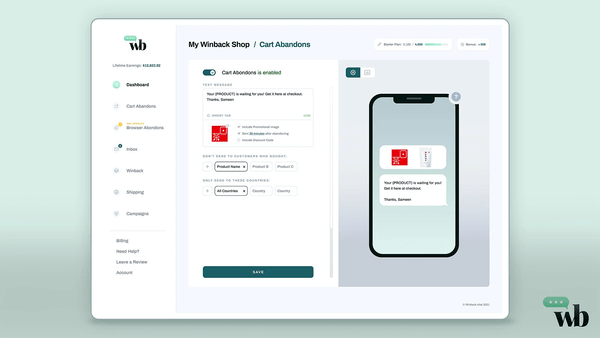
2. Promote Your Brand With Email Marketing Campaigns
Email marketing is one of the most important strategies for any Shopify owner. If you do it right, you can use email to attract new customers, retain existing ones, and generate a lot of sales.
As we mentioned above, email is an effective strategy to bring back abandoned carts. Send enticing offers to lost customers so that they return to your store and make a purchase.
Any eCommerce brand should also have a regular email newsletter, where they send product news, special offers, and any other useful marketing messages.
Email marketing is relatively easy to get started with, and it can make a major impact with minimal (or zero) cost. Getting your existing customers to return and make another purchase is much cheaper than acquiring new customers, and email is one of the best ways to make this happen.
Some important email strategies for Shopify include:
- Sending welcome emails to new customers (welcome emails get much higher open rates)
- Send out promotional emails that highlight sales, discounts, and special offers. This is an important way to ramp up your sales
- Use abandoned cart emails to recover lost carts
- Update existing customers with relevant information for their order, like order confirmations and shipping updates
You can also set up automated email campaigns that send out a strategic series of emails to a customer based on their actions.
When using email to market your Shopify store, divide your email list into different segments. You could have a list of target customers who haven’t made a purchase, existing customers, segment the list based on geographic location, demographic, and so on.
This way, you can send personalized messages to each list and promote products and offers that you know they will be interested in. This helps you get a lot better engagement from your email campaigns.
With Wishpond’s email marketing tool, Shopify store owners can easily send out personalized and customized emails to help them generate more sales. The platform also includes a range of tools (like popups and giveaway tools) that Shopify store owners can use to capture email addresses. This is easy to integrate with your Shopify store.
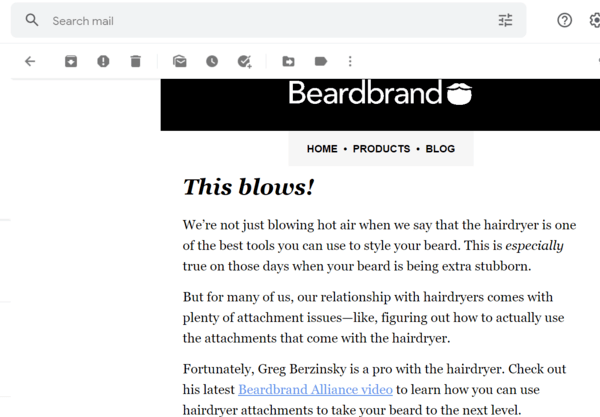
Above: An example of how eCommerce businesses can share useful content through mail to engage and inspire their audience
Top Tip: Sign up to your competitors mailing lists to see what kind of emails they’re sending and how you can win over customers based on this
3. Set Up a Referral Program
Word of mouth is one of the most powerful marketing strategies for Shopify stores, and a referral program is the best way to achieve this.
A referral program can help you spread huge amounts of brand awareness.
These programs work with a kind of snowball effect. One person refers your store to two people, each of these people refers your business to two more people, and so it grows. Eventually, your products will reach an enormous audience.
And the best part is that referrals from friends or family seem a lot more authentic than marketing messages from brands. This means a good referral campaign can build a lot of trust around your business.
In order to run a successful referral campaign, you’ll need to give people a reason to refer your business. For Shopify stores, a discount is always a good strategy. Although, you could also offer other incentives, like free shipping, free products, or any other exclusive perks. referral giveaways are always a winning strategy too.
You can also use Wishpond to create a viral referral promotion for your Shopify store.
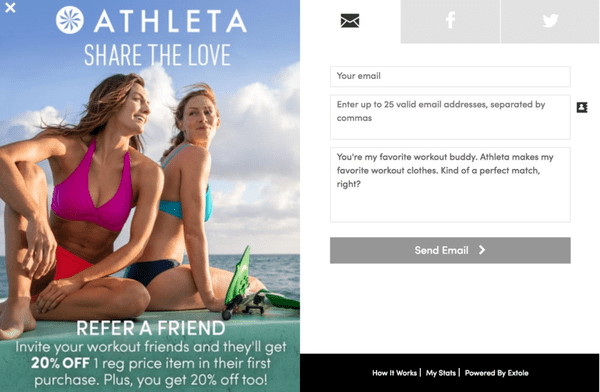
4. Send SMS Product Promotions
SMS marketing is totally underutilized, and it’s an incredibly powerful tool for Shopify store owners.
54% of customers prefer SMS to email marketing, yet only 11% of businesses send out SMSs.
People open pretty much every SMS they get. For Shopify marketing, this means you’ll be able to get a lot more engagement than you would with email. It’s the most direct line you have with a customer.
With the right Shopify app, you can send out SMS campaigns in seconds. These campaigns result in incredibly fast open rates and higher engagement. You also won’t have to worry about any SMS messages ending up in the spam folder.
You can use SMS marketing for Shopify to:
- Send out promotional announcements like sales and discounts
- Send out transactional information, like order confirmations and shipping updates
- Send out customer support messages
- Deliver cart abandonment messages
- Target specific customers with personalized offers
- Promote your product giveaway
- And more…
To run SMS campaigns for Shopify, you’ll need to use an SMS app that works with your online business. Winback is a great solution designed for Shopify. With Winback, you can set up automated SMS sequences, and use the platform’s templates to put these together. It takes no time at all, and can help you achieve a fantastic ROI.
5. Add Customer Reviews to Product Pages
Reviews are the first thing customers want to see before they make a buying decision. Without reviews, customers will struggle to trust your brand.
Reviews are a massive trust signal, and making them clearly visible on your product pages will have a huge impact on your sales. This is essential for creating social proof around your brand.
Positive reviews make 94% of shoppers more likely to support a business.
But even if a product doesn’t have amazing reviews, the reviews still offer valuable first-hand information that the customer wants to know. Even a bad review can help to build trust, while no reviews make the customer question the legitimacy of the product.
Always try to add reviews to product and checkout pages.
To do this, you’ll need to use a review app from the Shopify app store. You can even share positive reviews on social media or other areas of your website.
Once you’ve set this up, use your customer communication channels to encourage reviews.
Send out an SMS or email after the product has been shipped, inviting the customer to leave an honest review. You can even incentivize reviews, with a giveaway or discount, to help generate more reviews for your store.
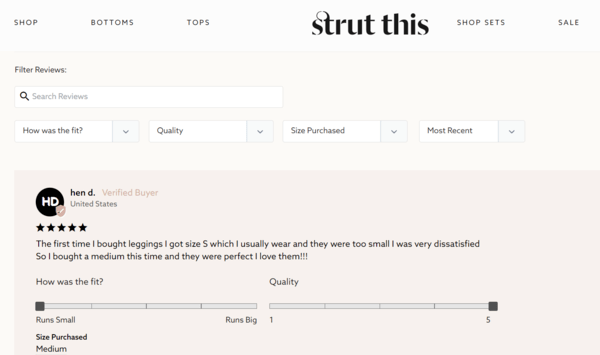
6. Automate Your Shopify Marketing Strategies
One of the most useful features of using Shopify as a platform is that you can automate a lot of your tasks with integrated Shopify apps.
This saves you hours of time and effort, letting you focus on growing your Shopify store while time-consuming marketing efforts run on autopilot.
Here are some of the things that you can automate to save you time:
- Cart recovery campaigns: bring back lost sales with cart recovery campaigns. Set these messages to trigger automatically after customers abandon carts, and you’ll be able to bring back a lot more sales without any effort.
- Social media promotions: Shopify store owners can integrate their Shopify store with social media sites and share products on these platforms with a single click. You can also set up Facebook, TikTok, and Instagram shops using Shopify apps, and automatically update your inventory on these shops to make it available for selling.
- Customer engagement: Keep your customers and prospects engaged and interested in your business with regular automated updates. This can include email communication, automating retargeting and remarketing campaigns, web push, and other channels. You can send out automated product updates, welcome emails, and just about anything else with the right Shopify app.
- Internal communication and program management: You can easily keep track of your Shopify store and inventory by integrating your Shopify store with apps like Slack, Trello, Google Sheets, Airtable, and more. This keeps track of your cross-functional projects, sales, customer relations, marketing activities, and more.
7. Start a Customer Loyalty Program
A customer loyalty program is a brilliant Shopify marketing strategy to build up a base of satisfied customers that come back for more.
With a good loyalty program in place, you’ll keep customers coming back for more. This is far more affordable and effective than trying to acquire brand new customers with each sale.
For a successful loyalty program, you’ll need to make sure that you offer something of value to customers. This could be discounts for return purchases, points for writing reviews or referring friends, offering limited edition access to certain products, and more.

Successful loyalty programs need to be easy to join and easy to get rewards from.
Here are a few helpful tips to create an effective Shopify loyalty program:
- Make the loyalty program available to anyone, even if they did not make a purchase. Rope them into the loyalty program with an email or push notification subscription instead.
- You can include various types of rewards in your loyalty program that aren’t just discounts or points. Things like free shipping, free products, and free consultations are all good driving forces.
- For the most effective loyalty program, run a survey and ask customers what types of rewards they want.
Setting up a loyalty program for your Shopify store is simple. There are plenty of great loyalty program apps available that integrate with your Shopify store.
8. Add an Instagram Feed to Your Shopify Store
This is another useful social proof strategy that follows the same idea behind reviews. If you add a clearly visible Instagram feed to your store, online shoppers can see valuable user-generated content and proof of your products in real-life scenarios.
Think of your Instagram feed as a mannequin in a store. A customer sees a dress looking amazing on someone on your Instagram feed, so they have to have it too.
Social media gives customers more confidence to buy, it showcases happy customers, and it shows your products in action.
If you share positive user-generated content in this Instagram feed, it will have the same effect as a 5-star review. It’s easy to clearly showcase these feeds on your store so that online shoppers get a greater overview of your products and what your brand is all about.
A Shopify marketing app like Instafeed lets you integrate your Instagram with your Shopify storefront, and create a shoppable Instagram feed.
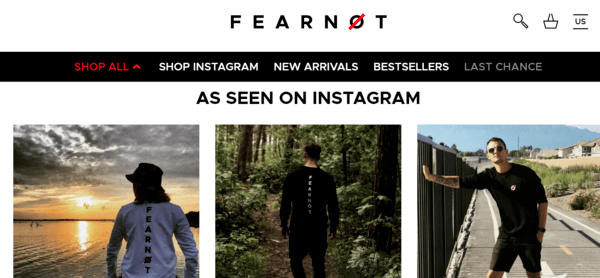
9. Be Active On Pinterest
Pinterest is one of the best social media platforms for eCommerce marketing.
This is because Pinterest users have a seriously high buying intent. Loads of people go onto Pinterest specifically to find products and product ideas.
If you use your Pinterest account properly, you can send these people straight to your checkout page.
Add appealing images of your products to Pinterest and use this to drive traffic to your Shopify store. You can even add product tags to your pins. This lets users click on your product image and get taken straight to the checkout page.
This is a great way to get people to discover your products and buy them all in the same browsing session.
Add your online store URL into your Pinterest profile, spend time writing engaging captions about your products, and create a range of different product boards to appeal to potential customers.
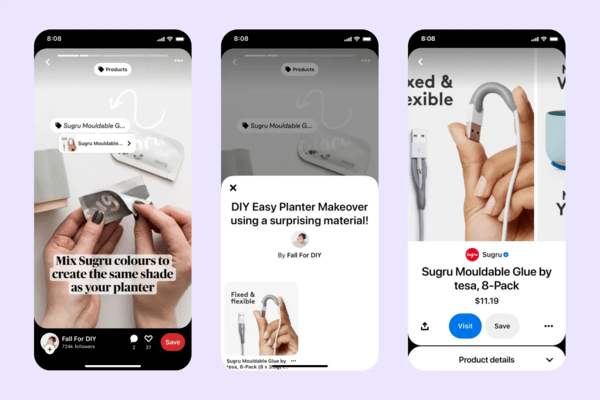
Image: Pinterest
10. Run Ads On Google and Social Media
Unfortunately, you can’t only rely on free website traffic if you want to make loads of sales.
Luckily, there are some great paid advertising campaigns that let you reach a lot of customers and generate an excellent ROI.
This is often the first Shopify marketing strategy that stores implement because it can get your products in front of a lot of people very quickly.
Google and Facebook are the best places to start running advertising campaigns. You can spend about $5 a day on ads here, and generate decent sales from this. So if you want to generate quick traffic, ads might be your best bet.
Some of the best paid advertising strategies for Shopify stores include:
- Google retargeting ads – These ads show to people who have already visited your store and shown an interest in your products
- Google shopping ads – To show customers that do a lot of online product research
- Facebook ads – These are great for impulse buys. They work particularly well with lower-value products
Paid advertising for Shopify can deliver fast results, but it comes with a price – literally.
And if you don’t know how to manage your ads properly, you might end up spending more than the revenue your ads generate.
Follow this guide if you want to learn more about setting up paid advertising campaigns.
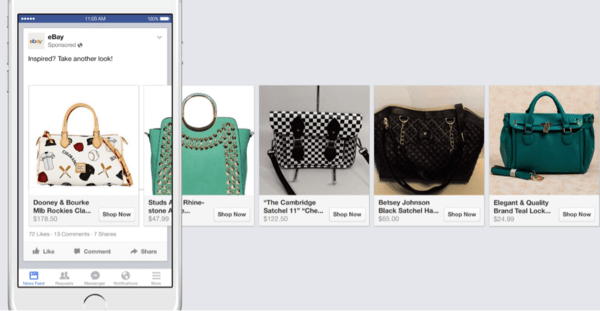
11. Focus On SEO
If you don’t want to spend lots of budget on paid advertising, then you should be focusing on SEO.
Get SEO right content marketing, and you’ll be able to send lots of relevant traffic to your store. This traffic is completely free, and it will keep on recurring over and over again.
While paid Google ads get you fast results, SEO takes more time and effort. The payoff is that you don’t pay for traffic, and can generate long-term results.
Most shopping journeys start with a search engine. If your store is on top of the right search results, you’ve already won over a lot of potential customers.
SEO is mostly focused on blog content marketing, but you can also optimize your product pages for search engines.
Every page on your eCommerce site should be optimized for the right keywords. Make sure that you focus on keywords with relevant search intent for what the page offers.
Here are a few best practices when it comes to SEO for your Shopify store:
- Target top of funnel keywords as these have higher search volumes
- Make sure your suite speed is good. This plays a major role in SEO
- Focus on long-tail keywords that shoppers would use to find specific products. These keywords have a higher buying intent
- Optimize all of the images on your site for search
- Be very descriptive when writing product descriptions, as you can fit a lot of relevant keywords into them
- Try to get backlinks by interlinking your category and product pages with other sites
Shopify users also get to access various built-in SEO features for Shopify. This includes things like setting up the URL structure, adding alt text for every image, and optimizing your meta titles and meta descriptions.

12. Set Up an Affiliate Marketing Campaign
Affiliate marketing is a powerful Shopify marketing strategy.
This is when you get affiliates to promote your products for you, and you only pay them for successful sales.
The huge advantage of this is that you don’t waste any marketing budget. Affiliate marketing always offers a strong ROI, because you only pay for successful sales.
All you need to do is set up an appealing affiliate promotion, which includes paying a flat fee or a portion of each sale to an affiliate. Reach out to relevant affiliates, and open up your affiliate program to anyone who wants to promote your store.
Affiliates can be bloggers, influencers, YouTubers, or even celebrities. You won’t have to do any promotional work, and you won’t have to spend a cent until a sale is made. It’s the perfect marketing strategy for busy eCommerce store owners.
Just look at Amazon. They have the biggest affiliate marketing program, with millions of affiliates around the world promoting their products.
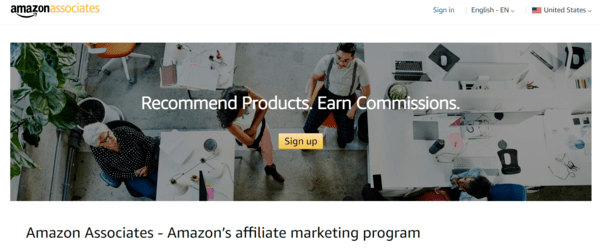
13. Get Involved in Community Marketing
Community marketing is different from social media marketing. Instead of creating your own community around your brand, you join an existing online community.
There are so many different online communities focused on niche interests. Just look at sites like Quora, Reddit, or even Facebook groups.
Shopify store owners can join relevant communities that match their target customer and use these spaces to develop meaningful relationships. Add advice, join conversations, and share valuable knowledge.
By posting regularly, you can use these spaces to build up a lot of trust and develop a strong brand reputation. And when an appropriate opportunity comes, use the community to promote your online business.
You already know that the community is full of people with the right interests, so they can easily become customers with a little bit of persuasion.

14. Create Engaging Social Media Posts
Social media is one of the best ways to reach a big audience and grow your customer base.
And when it comes to social media in your marketing strategy, don’t just focus on pushing your products. Create engaging content that inspires your audience and builds a relationship with them.
There are many different strategies that you can use for social media marketing. This includes things like using influencers, posting your brand’s story, running hashtag challenges, creating helpful content for your niche, sharing company news, product discounts, and more.
It’s often a good idea to add some personality into your social media – especially if you’re using a platform like TikTok.
When you create content, use social media as a space to diversify your Shopify marketing strategy. Show your products in a new light, and always try to gather some user-generated content.
Get social media right, and you’ll be welcoming thousands of fresh customers to your store.
@vessi The devil works hard but our Product Team works harder #vessi #waterproofshoes #corporatetiktok #picasso ? original sound – Betch
15. Run a Social Media Giveaway
On the topic of social media, product giveaways are one of the best strategies for eCommerce businesses.
You can use giveaways to generate loads of buzz around your brand, increase brand and product awareness, and drive traffic to your store.
Ecommerce stores can also use product giveaways to go viral and generate valuable user-generated content. Just look at some popular TikTok contests, and you’ll see just how much attention the right #hashtag challenge can bring you.
Everyone who enters your giveaway is interested in your products, so they’re easy marketing targets. Once the giveaway is over, send out a 10% discount code to all entrants. Your product is on their mind and they wish they had won it, so a discount might be just the push they need to become a customer.
Running effective Shopify giveaways is easy with Wishpond. Try out the social promotions tool to see just how powerful these giveaways can be.
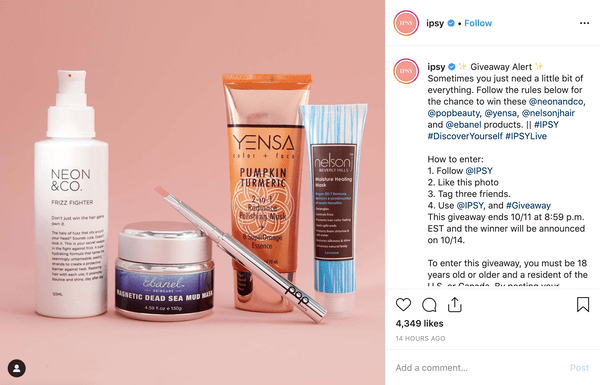
16. Promote Your Products in Blog Articles
A great feature of Shopify is the platform’s blog software.
All Shopify users can add a blog to their website. This is a fantastic way to strategically promote your products and gain organic traffic.
Write helpful blog content for your niche, make sure this content is SEO-friendly and targeted to relevant keywords. Insert your products into this blog post.
This tactic is not overly-salesy, but it will help you to find a great opportunity to promote your products to an interested audience.
Try to identify a problem that your product solves. Write a blog post about this problem, and offer your product as a solution.
It’s a low-risk marketing strategy that doesn’t require much (or any) budget. And if your blog post ranks well, it can bring you a lot of traffic and customers over a long period of time.

Above: Examples of helpful blog post topics that an online surf store uses to promote products
17. Send Out Push Notifications With Promotions
Have you tried push notifications in your marketing campaigns?
They’re a great way to deliver fast and effective marketing messages that can bring your store a lot of traffic.
Unlike email, push notifications are sent straight to your customers browser, so there’s no chance of them missing it
This means you can always deliver the message you want and it will always be seen.
You can use push notifications to send out all kinds of promotions and news related to your store. Send out product discounts, sales notifications, new product updates, or anything else customers might be interested in.
Just download a push notification app for Shopify and start collecting subscribers. Offering a discount for subscribers is an excellent tactic.
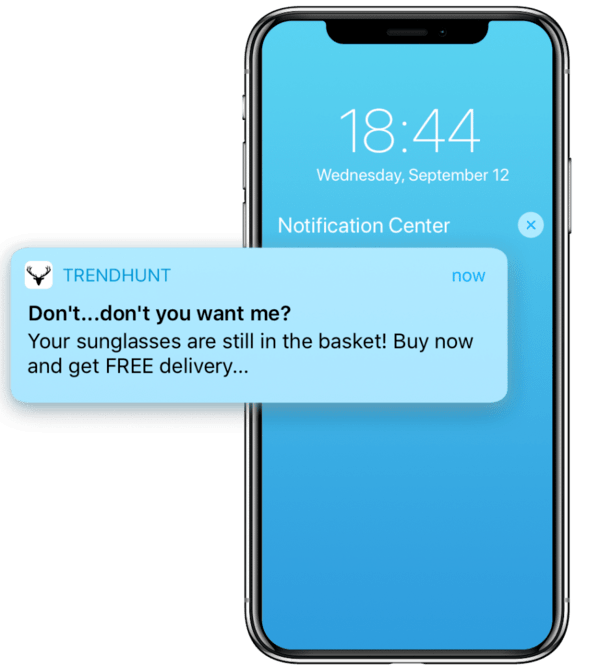
Image: xtremepush
18. Collaborate With Other Brands
Other Shopify businesses don’t have to be seen as competition. You can form strategic partnerships with other brands, and collaborate with them to access a bigger audience and make more sales.
Find a business that compliments yours and partner up for a promotion or giveaway.
For example, let’s say you sell activewear. You can create a strategic partnership with another fitness/wellness brand, like a supplement business or a yoga mat store, and create a product bundle.
You both share a similar audience which each brand will promote to. It’s a win-win situation.
This is an easy way to massively expand your reach.
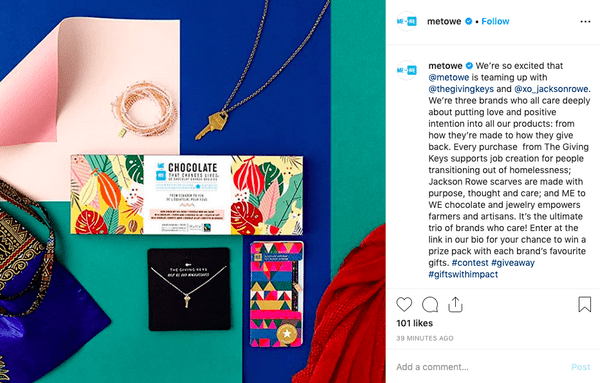
19. Use Video to Promote Your Products
Video is one of the best ways to display and promote your products. Right now, short-form video is leading social media content. With TikTok, Instagram Stories, and Reels, everyone is making fun and engaging videos.
These kinds of videos are incredibly quick and easy to make. There’s no need to hire a production team or be a pro video editor. Just stay on top of trends and have fun with them.
Shoot some of your products, make it fun, add trending audio, and repeat. The more of these videos you make, the better you will get at them.
And it’s not just that these videos are fun and engaging, they’re also the best way to go viral. If you look at the Instagram or TikTok algorithm, both platforms provide Reels and TikToks more reach.
View this post on Instagram
20. Sell Your Products On Social Media
Shopify stores don’t have to limit sales to their website.
One of the best features of Shopify is that you can integrate your Shopify store with various social media platforms, and sell your products directly from the platforms.
This is known as social commerce, and it streamlines the customer journey – making it easier for customers to discover and purchase products without leaving the ocisl media app.
Here is a breakdown of the ways you can sell on social media platforms.
Facebook is the leading social commerce platform thanks to its easily accessible Facebook Shops tool.
Anyone with a business profile can set up a Facebook Shop for free, which is connected to your Shopify product range. You can either do this automatically through your eCommerce platform, or you can upload it through a spreadsheet.
Facebook’s social commerce solution allows buyers and sellers to easily communicate via Messenger. This can be a great way for your brand to connect and engage with its audience.
Facebook is also a good platform for shoppers to organically find products that match their interests.
Organic discovery works well through the mobile app, and users can complete their transaction from discovery to purchase all within the same app.
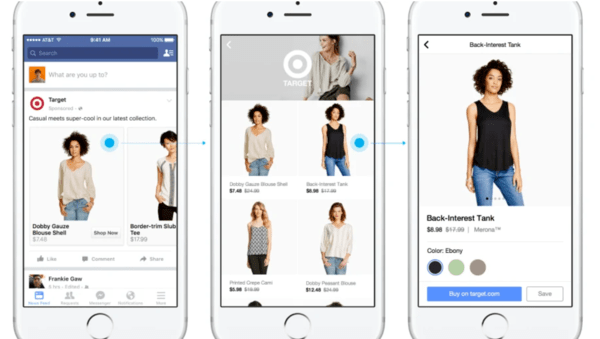
Image: Facebook
Instagram Shopping allows eCommerce store owners to sell their products directly on the platform.
Your Instagram Shop is just like your usual online storefront. All you will need is a business/creator account and an online store to set this up. Once your Instagram Shop is live, shoppers can browse and buy your products without leaving Instagram.
Your Instagram Shop can be easily customized with different themes, collections, and curated products. This could include things like bestsellers, seasonal trends, and new arrivals.
With your Instagram Shop, you could either send shoppers to your Shopify website, or they could use Instagram checkout to purchase products directly. When shoppers make a purchase through Instagram Checkout, a small fee is charged. Otherwise, setting up an Instagram Shop is completely free.
When setting up your Instagram Shop, you can set up product pages just like you would on your online store. These product listings include things like your product description, prices, and product information.
Instagram Shopping Features
Here are some of the features and different ways to use Instagram Shopping:
- Shoppable Posts: You can integrate your store with Instagram product tags. Tag products in your posts just like you would tag people, and when users tap the product tag, they will be sent to the relevant product page.
- Shoppable Stories: Just like shoppable posts, you can also use product tags in your stories to send more traffic to your store.
- Shoppable Ads: Product tags can also be used in Instagram ads if you want to get your products out to a wider audience. You can set this up in the Ads Manager, or boost shoppable posts.
- Live Shopping: This can be a great way to launch new products and promote sales of a specific product in real-time. You can incorporate your product tags into your live stream, where users are sent to your store from your broadcast.
- Shopping Tab: The Instagram Shopping Tab is an excellent way to get your products and brand out to more customers. Users can discover relevant products and brands through this tab, where yours could be included to boost your visibility to new customers.
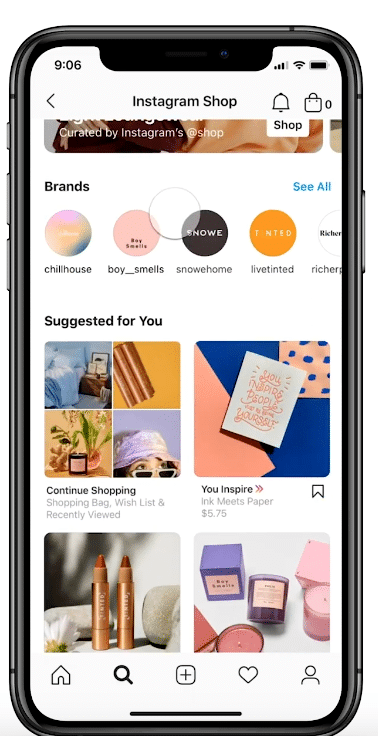
Pinterest has become a popular platform for selling online. Pinterest is not necessarily a social commerce platform in the sense that you can’t complete transactions directly on pins.
Instead, users are redirected to a landing page based on the product where they can complete their transactions. However, 89% of Pinterest users are on the platform to find buying inspiration.
Pinterest social commerce is done through the use of Shoppable Pins. These pins are directly linked to your eCommerce products, and users can just tap on your product image and be directed to a product purchase page.
The visual appeal of Pinterest makes it a great place for brands to show off their products online and attract paying customers. Pinterest also has a link to Etsy, which can make it easier to use the social media platform to boost your Etsy store sales.
Follow this guide for a more complete understanding of how to use Pinterest for eCommerce.

Image: Pinterest
TikTok
TikTok is the most recent social commerce platform, offering a partnership with Shopify. This new partnership marks the introduction of organic product discovery and shopping tabs to TikTok.
The only way to sell on TikTok is with a Shopify account.
Being one of the fastest-growing social media platforms, TikTok is definitely a place to look towards for social media marketing. With its new social commerce feature, the potential to reach a large new audience of customers is huge.
Follow this guide for a more complete understanding of how to use TikTok for eCommerce.
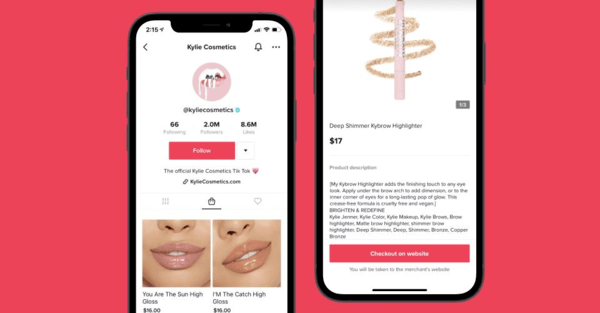
Image: TikTok
21. Consider Influencer Marketing
Influencer marketing is one of the biggest marketing trends for B2C brands right now. It also offers one of the best ROIs.
As an eCommerce business, influencers are one of the best ways to start selling to a bigger audience. Customers trust influencers more than they trust brands, and influencers have a lot more power over convincing their followers to make a purchase.
Influencers don’t have to be out of reach for small businesses. You can partner up with smaller micro-influencers to promote your products. These smaller influencers are often even more convincing and usually have a more engaged audience.
Make sure that the influencer you choose to work with shares the same target audience as your business. The great thing is that there are so many influencers out there, each appealing to a very specific niche.
It’s also a good idea to look at the influencer’s levels of engagement above their follower count. A smaller, more engaged following is much better than a large, unengaged following.
View this post on Instagram
The Best Shopify Marketing App
The great thing about Shopify marketing is that there are so many great tools available on the app store to help you promote your online store. This means you have loads of opportunities to add extra marketing functionality to your store.
However, the problem is these apps often only perform a single function. This can make it expensive to get all the Shopify marketing tools you need.
This is why Wishpond’s Shopify marketing solution is ideal for small businesses. It’s a single platform designed to work with your Shopify store. You get all of the marketing tools you need, such as tools for:
- Email marketing and email automation
- A leads database
- Social promotions and referral tools
- Popups and online forms
- Landing pages
And a lot more all in one convenient platform. This means you can use it to run many of the Shopify marketing strategies listed above, without needing separate marketing tools.
Shopify Marketing Channels
Once you’ve got your Shopify store up and running, what are the best Shopify marketing channels to focus on?
Well, this depends on your target audience and what you sell. However, there are a few marketing channels that consistently achieve the best results for most Shopify stores. There are:
- Email marketing
- Social media (Facebook, Instagram, Pinterest, TikTok)
- SMS marketing
- YouTube
- Your Shopify website (optimized for conversions)
Instead of focusing on too many Shopify marketing channels, rather try to optimize these essential ones first to make sure you get maximum engagement and conversions from them. Then you can always expand your marketing channels.
What Shopify Marketing Strategy is Best for You?
Now you have a list of 21 killer Shopify marketing strategies. Which one should you choose?
Before you dive in and try using them all, know that every business has a unique audience and requires a unique marketing plan. Start by understanding your customers, knowing what their shopping habits are, and what they’re looking for in a brand like yours.
Using a mix of these strategies is best. However, don’t try to do too much at once. Rather master a few marketing strategies than attempt them all without seeing results.
If you need help with your Shopify marketing but don’t have the time, Wishpond offers an easy solution. With Wishpond, you can get a full platform of Shopify marketing tools, as well as dedicated marketers, to create and manage campaigns for you.
Frequently Asked Questions
Can you use Shopify for marketing?
If you have a Shopify store, then you can access all kinds of Shopify apps and features for marketing purposes. Shopify offers a wide range of marketing possibilities (like SEO functions). Shopify also comes with a dedicated Marketing Page, where you can manage and create your marketing campaigns for promotions.
How do I promote my Shopify store?
Here are 21 strategies for Shopify marketing:
- Create Abandoned Cart Recovery Campaigns
- Reach Customers With Email Marketing
- Set Up a Referral Program
- Send SMS Product Promotions
- Add Customer Reviews to Product Pages
- Automate Your Shopify Marketing Strategies
- Start a Customer Loyalty Program
- Add an Instagram Feed to Your Shopify Store
- Be Active On Pinterest
- Run Ads On Google and Social Media
- Focus On SEO
- Set Up an Affiliate Marketing Campaign
- Get Involved in Community Marketing
- Create Engaging Social media Posts
- Run a Social Media Giveaway
- Promote Your Products in Blog Articles
- Send Out Push Notifications With Promotions
- Collaborate With Other Brands
- Use Video to Promote Your Products
- Sell Your Products On Social Media
- Consider Influencer Marketing
How much does marketing cost on Shopify?
This depends on what type of campaign you run, what apps you use, and how much advertising budget you’re willing to spend. Some Shopify marketing campaigns are completely free (like email and SEO), while others require a budget (like paid ads and influencer marketing).
Related Content
- What is Shopify and How Does Shopify Work?
- How to Sell on Shopify: 7 Easy Steps to Sell Your Products Like a Pro
- 14 Best eCommerce Marketing Tips & Strategies to Boost Sales
- 30 Ecommerce Marketing Strategy Examples with Proven Success
- 12 Must-Have eCommerce Features to Increase Sales (+ Checklist)

